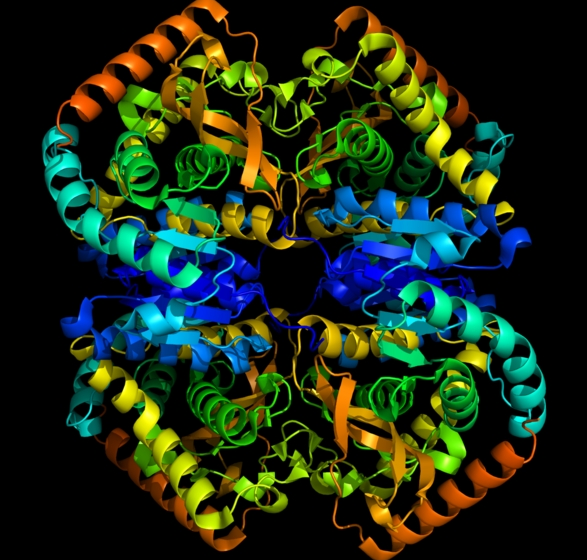Early on in this gig, I was asked to write a release about crystallography. This was a challenge, because I had no idea what crystallography was. I replied that you don’t see stories about crystallography in the mainstream press, which is true. But it’s also a shame, because, it turns out, crystallography is pretty cool.
So what is crystallography? It’s how we map out the submicroscopic world around us. We’re talking unbelievably tiny – beyond the reach of even the most powerful microscopes. So how do you “see” something that can’t be seen? Crystallographers must capture a molecule in an ice crystal – I’m told the word “freezing” is scientifically inaccurate – and they bombard it with X-rays. They then track how those X-rays bounce, sort of like sonar. From there they can work backward from the “diffraction pattern” to piece together an image of the molecule – an image that typically looks like it was made with Tinkertoys and wire.
Why is this useful? For one thing, it lets us develop drugs and vaccines. Scientists look at the structure of the molecule and then design drugs that can interact with it to accomplish the desired effect. For example, Dr. Ed Egelman recently revealed the tiny tentacles that urinary tract infections use to lash themselves to the urinary tract. By understanding their structure, one day we might be able to block them from taking hold. The nasty bugs would just wash right out, so no more painful, burning urination.
Isn’t that cool? (Pardon the crystallography pun.)
I’ll also introduce you to some of our crystallography folks in future posts, including one who claims (with a wink) to have the only Jeffersonian lab at UVA.
